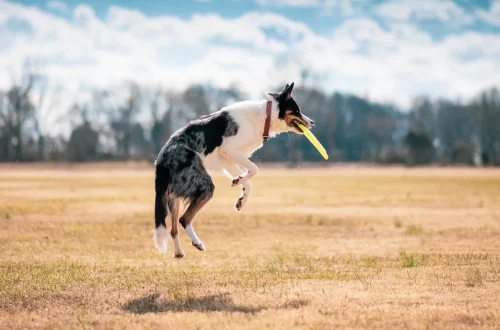
Can Dogs Have Allergies to Grass? Understanding the Symptoms and Care
Understanding the impact of environmental factors on our pets is crucial for their overall well-being. Among these factors, allergens present in nature can significantly affect dogs, leading to various health issues. When we think of allergies, we often consider food or seasonal pollen; however, grass can also be a common culprit. As dogs spend a considerable amount of time playing outdoors, they are naturally exposed to various types of grasses and their associated allergens.
Many pet owners may not realize that their dogs can experience allergic reactions to grass. Symptoms can range from mild irritation to severe discomfort, which can affect a dog’s quality of life. Understanding the causes and symptoms of grass allergies is essential for pet owners to provide the best possible care for their furry companions. This knowledge not only aids in identifying potential issues early on but also assists in managing and alleviating symptoms.
In this exploration, we’ll delve into how grass can act as an allergen for dogs, the signs that indicate an allergy, and effective management strategies for pet owners. By fostering a deeper understanding of this topic, we can better ensure the health and happiness of our beloved pets.
Recognizing Grass Allergy Symptoms in Dogs
Identifying a grass allergy in dogs can be challenging, as symptoms may often be mistaken for other conditions. Common signs that your dog may be suffering from a grass allergy include excessive itching, redness of the skin, and inflammation. One of the most noticeable symptoms is persistent scratching or biting at the skin, especially in areas where the dog has direct contact with grass. This can lead to secondary skin infections, which may require veterinary intervention.
Another indicator of a grass allergy is the presence of watery eyes and sneezing, similar to what humans experience with seasonal allergies. If you notice your dog frequently rubbing its face against the ground or other surfaces, it may be trying to alleviate discomfort caused by allergens. Additionally, some dogs may exhibit gastrointestinal issues, such as vomiting or diarrhea, as a reaction to allergens they have ingested or inhaled.
It’s important to observe your dog closely during outdoor activities, especially in grassy areas. Documenting when and where symptoms occur can be helpful when consulting a veterinarian. Keep in mind that the severity of allergic reactions can vary from one dog to another; while some may show mild symptoms, others could experience acute distress. If you suspect your dog has a grass allergy, it’s crucial to seek professional advice to confirm the diagnosis and discuss appropriate treatment options.
Causes of Grass Allergies in Dogs
Grass allergies in dogs are often caused by proteins found in grass pollen, seeds, and blades. When a dog’s immune system mistakenly identifies these proteins as harmful substances, it triggers an allergic reaction. This reaction is a part of the dog’s immune response, leading to the release of histamines and other chemicals that cause inflammation and various symptoms.
There are numerous types of grasses that can cause allergic reactions in dogs. Common culprits include Bermuda grass, Timothy hay, and Kentucky bluegrass, among others. The specific type of grass that triggers an allergy can vary based on geographical location and the time of year. Understanding which grasses are prevalent in your area can help you take preventive measures.
Genetics also play a role in a dog’s susceptibility to allergies. Certain breeds are predisposed to developing allergies, including Golden Retrievers, Labrador Retrievers, and West Highland White Terriers. If your dog belongs to one of these breeds, staying vigilant for any signs of allergies is especially important.
Environmental factors can exacerbate allergy symptoms. For instance, if your dog is frequently exposed to freshly mowed grass or spends time in areas with high pollen counts, the likelihood of an allergic reaction increases. Additionally, other allergens such as dust mites, mold, and even certain foods can compound the effects of grass allergies, making it essential to address overall environmental health for your pet.
Managing Your Dog’s Grass Allergy
Effective management of a dog’s grass allergy involves both preventive and reactive strategies. First and foremost, minimizing exposure to grass is key. If your dog shows signs of allergy when playing outdoors, consider limiting time spent in grassy areas, particularly during high pollen seasons. Opting for paved pathways or gravel parks can provide a safer environment for outdoor activities.
Regular grooming can also help alleviate symptoms. Bathing your dog with hypoallergenic shampoos can remove allergens from their coat and skin. Additionally, brushing your dog frequently helps to eliminate excess fur and dander that may harbor pollen. Pay special attention to areas where grass comes into contact with the skin, as these are often the most affected.
It’s also beneficial to create a clean indoor environment. Vacuuming regularly and using air purifiers can help reduce indoor allergens that may aggravate your dog’s condition. When returning from outdoor walks, wiping your dog’s paws and legs can prevent allergens from being tracked inside your home.
Consulting with a veterinarian for a tailored treatment plan is crucial. They may recommend antihistamines or corticosteroids to manage symptoms effectively. In some cases, allergy testing may be suggested to identify specific triggers, allowing for more targeted treatment options. Immunotherapy, such as allergy shots, can also be an effective long-term solution for some dogs.
Preventive Measures for Grass Allergies
While managing symptoms is essential, taking preventative steps can significantly reduce the likelihood of allergic reactions in the first place. One effective strategy is to monitor the pollen count in your area and adjust your dog’s outdoor activities accordingly. On days when pollen levels are particularly high, keeping your dog indoors or scheduling walks during early morning or late evening can help minimize exposure.
Providing a balanced diet plays a vital role in your dog’s immune health. Consulting with a veterinary nutritionist to ensure your dog receives proper nutrients can strengthen their immune system and potentially reduce allergic reactions. Supplements like omega-3 fatty acids may also help reduce inflammation and improve skin health, which can be beneficial for dogs with allergies.
Another preventive measure involves regular veterinary check-ups. Keeping your dog’s vaccinations up to date and addressing any underlying health issues can improve their overall resilience against allergens. Additionally, regular health screenings can help catch allergies early before they develop into more severe conditions.
Lastly, consider using protective gear such as dog booties or jackets designed to shield your pet from allergens. While it may take some time for your dog to adjust to wearing these items, they can provide an additional layer of protection during outdoor adventures.
By taking a proactive approach to managing and preventing grass allergies, pet owners can help ensure their dogs lead happier and healthier lives.
**Disclaimer:** This article is not intended as medical advice. If you suspect your dog has an allergy or any health issue, please consult your veterinarian for professional guidance.




